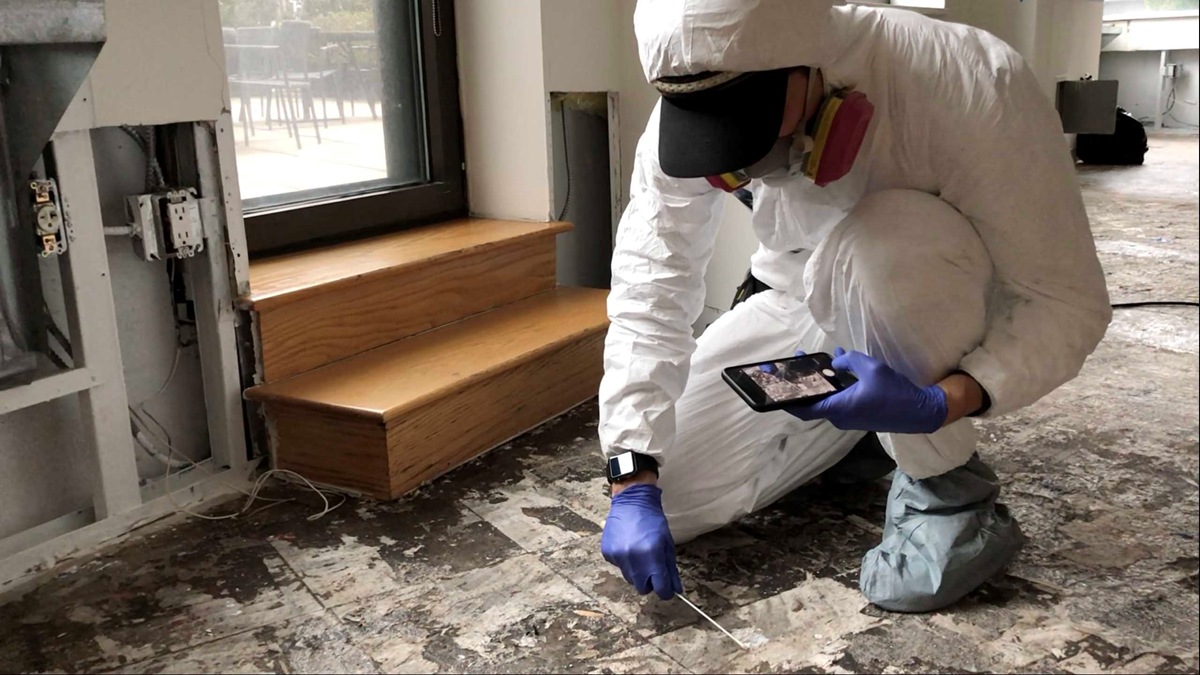What Is Mold And What Are The Causes Of Its Growth
Mold is a type of fungus that can grow both indoors and outdoors. It looks like a fuzzy or slimy patch and can be in different colors, like black, green, or white. Mold spreads through tiny spores that float in the air. When these spores land on a damp surface, they can start to grow. Mold needs moisture to grow, so it often shows up in places where there is water or high humidity.
Common causes of mold growth include leaks in roofs or pipes, flooding, or condensation from windows. Poor ventilation can also cause mold because it allows moisture to build up inside a home. Mold can grow on many surfaces, like walls, ceilings, carpets, and wood. Once mold starts growing, it can spread quickly if not addressed. Understanding what mold is and what causes it to grow can help you take steps to prevent it from becoming a problem in your home.
Using Moisture Meters For Detection
Moisture meters are important tools for detecting mold. Since mold needs moisture to grow, finding damp areas in your home is the first step in identifying where mold might be hiding. A moisture meter is a device that measures the amount of water in materials like wood, drywall, or carpet. It helps you find hidden moisture that you might not see, like behind walls or under floors. By using a moisture meter, you can check areas that are at risk for mold growth, such as basements, bathrooms, or attics.
If the meter shows high moisture levels, it’s a sign that mold could be growing in that area. This is why moisture meters are often used by professionals who offer mold remediation services Maine. They help locate problem areas so that mold can be properly treated before it spreads. Using a moisture meter is a key part of preventing mold from becoming a bigger issue in your home.
Air Sampling For Mold Spores
Air sampling is a method used to check for mold spores in the air. Mold spores are tiny and can’t be seen with the naked eye, but they can cause health problems if they’re breathed in. To find out if mold spores are in the air, a special pump is used to collect air samples from different areas of your home. These samples are then sent to a lab where they are analyzed to see if there are mold spores present and how many. Air sampling is important. Mold can be hidden, like inside walls or under floors.
Air samples can help detect it, even if you can’t see it. This method is useful in areas where you suspect mold might be, but you’re not sure. Air sampling gives you a clear idea of whether mold is affecting the air quality in your home and helps you decide what steps to take next.
Surface Sampling Techniques For Mold
Surface sampling is a way to test for mold on surfaces in your home. This method involves taking samples from areas where you can see or suspect mold. There are different ways to collect surface samples, such as using a cotton swab, tape, or a small cutting tool. The sample is then sent to a lab where it’s tested to see what type of mold is present and how much of it there is.
Surface sampling is helpful when you see mold growing on walls, floors, or other areas but want to know more about it. Knowing the type of mold is important because some molds can cause more health problems than others. Surface sampling can also help you find out if the mold is spreading to other areas. By testing surfaces, you can get a better idea of how serious the mold problem is and how to treat it.

Infrared Cameras In Mold Detection
Infrared cameras are another tool used in mold detection. These cameras don’t see mold, but they help find hidden moisture, which can lead to mold growth. Infrared cameras work by detecting temperature differences in surfaces. Cold spots in walls, ceilings, or floors could mean that there is moisture inside. Since mold grows in damp areas, finding these cold spots can help you locate where mold might be hiding.
Infrared cameras are useful. They can see behind walls and under floors without tearing anything down. This makes them a non-invasive way to check for mold. Professionals often use infrared cameras during mold inspections to make sure they don’t miss any hidden problem areas. By finding these spots early, you can take action to fix the moisture problem and prevent mold from spreading in your home.
Bulk Sampling For Mold Identification
Bulk sampling is a method used to identify mold in your home by taking a small piece of the material where mold is growing. This could be a piece of drywall, wood, or carpet. The sample is sent to a lab where it’s analyzed to find out what type of mold it is and how much of it is present. This method is useful for determining the extent of mold growth and for identifying the specific type of mold. Knowing the type of mold is important because different molds need different treatments.
Bulk sampling can also help you understand how serious the mold problem is and whether it has spread to other areas. If you are dealing with mold in your home, it’s a good idea to consider mold testing Maine services to help identify the problem. Bulk sampling provides detailed information that can guide the next steps in mold removal and prevention.
Laboratory Analysis Of Mold Samples
Laboratory analysis is an important step in the mold inspection process. After collecting air, surface, or bulk samples, these samples are sent to a lab for testing. In the lab, scientists examine the samples under a microscope to identify the type of mold and measure how much is present. They can also test the mold to see if it’s producing any harmful toxins. The results from the lab analysis help determine the seriousness of the mold problem in your home.
Knowing the type of mold is crucial because some molds are more harmful than others, especially for people with allergies or asthma. The lab report will tell you what kind of mold is in your home and how much of it there is, which helps in deciding the best way to remove it. Laboratory analysis provides accurate information that is key to addressing mold problems safely.
Importance Of Mold Odor Inspection
Mold odor inspection is a method used to detect mold by smelling for musty odors in your home. Mold often has a distinct, unpleasant smell that can be noticed even if the mold itself is hidden. This smell is usually strongest in areas where mold is growing, such as basements, bathrooms, or behind walls. If you notice a musty smell in your home, it could be a sign that mold is present. Even if you can’t see the mold, the smell can help you identify areas that need to be inspected further. Professionals offering mold removal services Maine often start with an odor inspection to locate mold. This is a simple but effective way to find mold, especially in areas that are hard to reach or see. By paying attention to mold odors, you can catch mold problems early and take action to remove them before they get worse.
Preventative Measures After Mold Inspection
After a mold inspection, it’s important to take preventative measures to stop mold from coming back. Start by fixing any moisture problems in your home, such as leaks in the roof, pipes, or windows. Make sure your home is well-ventilated, especially in areas like bathrooms and kitchens where moisture can build up. Using dehumidifiers can help keep the humidity levels low, which makes it harder for mold to grow. Cleaning areas that are prone to moisture, like shower walls and basements, can also prevent mold from developing. If the inspection found mold, make sure to remove it completely and follow up with a mold remediation plan. This might include using mold-resistant paints or materials in areas that are likely to get wet. By taking these steps, you can help ensure that mold doesn’t return and keep your home safe and healthy.




